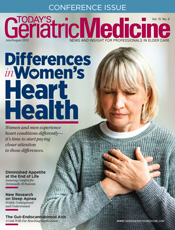
July/August 2022
Wound Care: The Healing Power of Light Light Therapy for Wound Healing and More It might sound like something out of a science fiction novel, but light therapy is proving to have remarkable healing capabilities that can make a big difference in patients’ lives. More specifically, ongoing research has shown that photobiomodulation (PBM) therapy, a form of low-dose light therapy, can be used to improve wound and soft tissue healing, reduce inflammation, and provide pain relief—promising news for the evolution of wound care. PBM therapy relies on nonionizing light sources placed near or in contact with the skin. The light energy (photons) penetrates the tissue to interact with chromophores located in the cells, resulting in photophysical and photochemical changes. This can lead to changes at the body’s molecular, cellular, and tissue levels. Of course, light therapy isn’t exactly new. In fact, forms of light therapy have been around for decades. But recent marked advances in the technology have made it more accessible and affordable for wider adoption by the medical community. Accumulating Research According to Praveen Arany, DDS, PhD, an assistant professor of oral biology in the UB School of Dental Medicine and senior author of the UB study, the light needed for treatment is so low dose that it almost seems “too good to be true” to some people. In many ways, that’s been a barrier to adoption, as some in the medical community remain skeptical. But the research, he says, is encouraging. “Our body uses light to make vision possible, so we know these light-sensitive molecules are already in the body,” Arany explains. “Some of these molecules are in the mitochondria and others in neurons or in the extracellular phase. But all of these different molecules, when activated, incite therapeutic responses.” The impact of radionecrosis is similar to that of burn wounds and can cause inflammation, scarring, and impeded blood flow. Now, radionecrosis is treated with routine wound care management, pain medication, and, occasionally, surgery. “In our study, we looked at preventing the incidence of wounds in radiation therapy,” Arany says. “Radiation and chemo can damage cells, but we’ve noted that photobiomodulation can help prevent that damage. Just like you would exercise and train leading up to a competition, this treatment should be performed before you create the damage—like a preconditioning protocol. We recommend this treatment 30 minutes to two hours before every radiation treatment.” In the study, which was completed in an animal model, researchers looked at both near-infrared and red LED light. Without PBM therapy, wounds took an average of 61 days to heal. But with the near-infrared light therapy, healing occurred within an average of 49 days. When using red light therapy, healing occurred at an average of 42 days. Radionecrosis is an unfortunate side effect of cancer treatments that have otherwise proven to help improve mortality rates. “This is promising news for cancer patients,” Arany says. Various Applications Another study, published in Scientific Reports, found that PBM therapy assisted with accelerated burn wound healing. Arany, who was lead author on this study, too, says that the role PBM therapy can play in wound healing has to do with the photoactivation of the latent transforming growth factor beta 1, a protein that is capable of promoting tissue healing and regeneration. PBM therapy has also been demonstrated to aid in the prevention of oral mucositis (OM), a severe complication of chemoradiotherapy involving painful ulcers. According to Arany, various studies have shown that patients report that OM is the “worst side effect of their cancer treatment.” In severe cases, it can even lead to hospitalization. Because PBM therapy has been shown to be among the most effective interventions for prevention of OM, new guidelines from the Multinational Association of Supportive Care in Cancer and the International Society of Oral Oncology were released in 2019, recommending PBM therapy ahead of radiation treatments. In the wake of the opioid crisis, Arany shares another piece of promising information—light therapy could work as an alternative to opioids, which are often prescribed to address OM. Since PBM therapy has pain relief properties, it could reduce or eliminate opioid use during OM healing. Beyond Wound Care As the research continues to diversify, Arany calls this both a blessing and a bane. As the possibilities for light therapy seem to multiply, so does the belief that it’s mere pseudoscience. In other words, it’s difficult for many to believe that light is capable of such healing powers across numerous fields and in various modalities. In many ways, it does seem contradictory since high-intensity light, in the form of laser, is actually used to cut or intentionally damage tissue. But low-level light does just the opposite—decreasing pain and inflammation, and promoting healing. As research and studies continue, Arany says that they are continually learning more about the future of these treatments. Of course, this is quite new to many in the medical field—and different from what’s taught in school. “As doctors, we are not taught that light can be used as a treatment tool, so it is just not something that we think of in a therapeutic way,” Arany says. “That has continued to be a barrier on its own. Something that is so noninvasive and nonpharmacological seems to be a stretch for some trained professionals. It just appears to go against what they’ve learned.” PBM therapy treatment, he adds, is extremely innocuous—and in many ways, that adds to the misperception that it’s not making a difference. “Patients do not feel anything during a treatment other than some warmth,” he says. “Unfortunately, this has also led to unnecessary overdosing. It is truly the subtle treatment that works best. Using too much light can actually result in less effective results, compounding the myth that this treatment does not work.” Looking Ahead — Lindsey Getz is an award-winning freelance writer in Royersford, Pennsylvania. |
